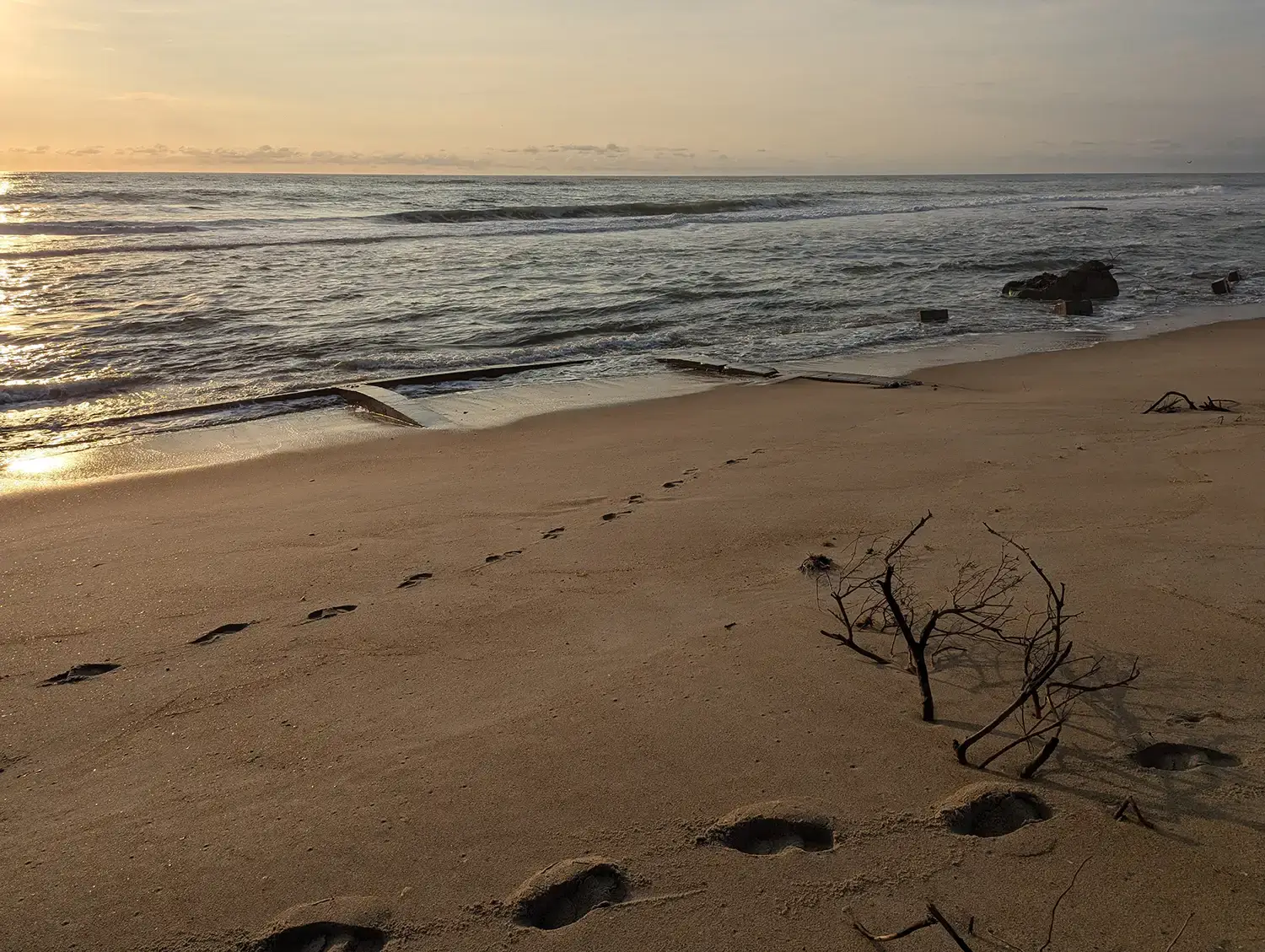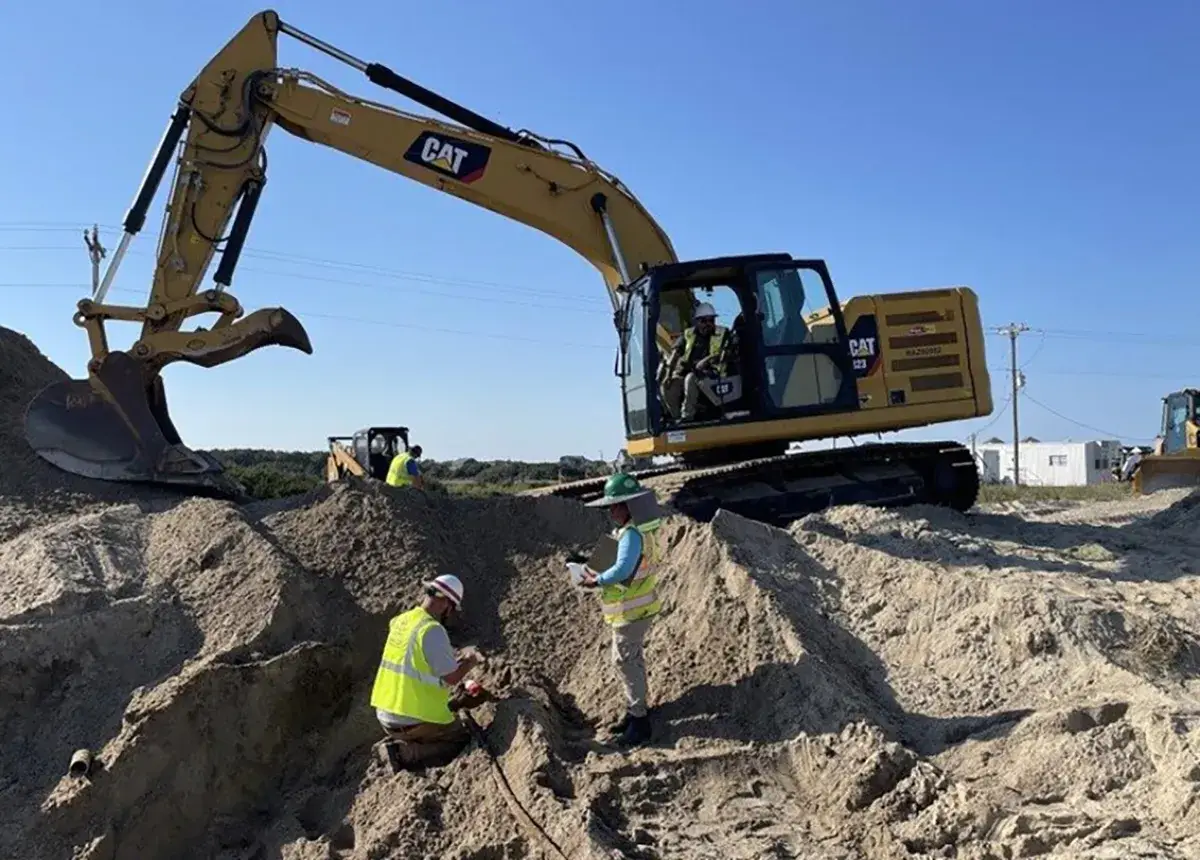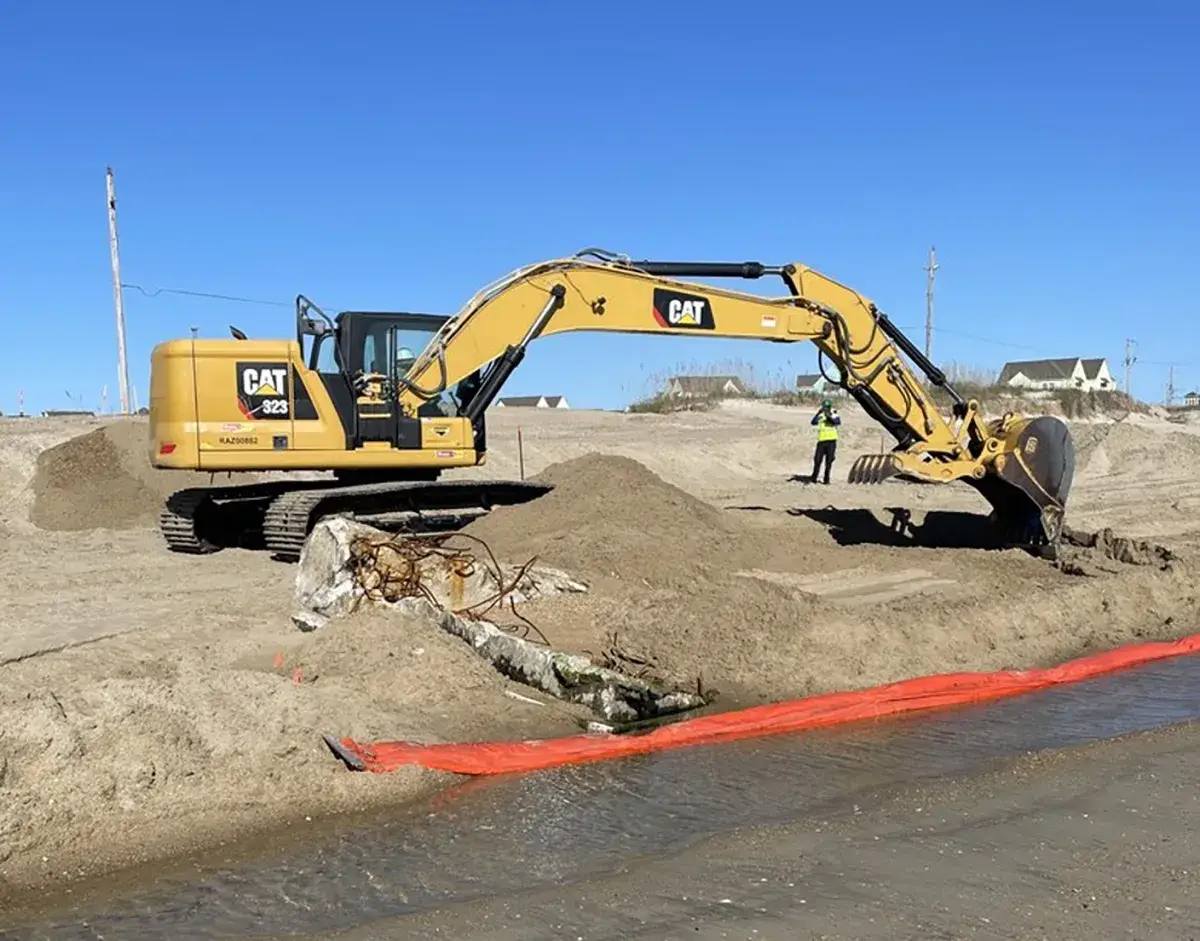Cape Hatteras, North Carolina is a coastal area known for its natural beauty and recreational appeal, it faced an urgent environmental threat when petroleum contamination from WWII-era former Naval operations was discovered along its shoreline near the popular surf spot of Buxton Beach.
The U.S. Army Corps of Engineers Savannah District contacted Bay West for assistance. Erosion was worsening, public concerns were rising, and the risk of contamination spreading further along the coast demanded swift action. Bay West mobilized a response team within days to assess the situation and implement a cleanup plan.

Exposed subsurface structures and petroleum staining revealed along Buxton Beach prior to Bay West’s emergency response and cleanup.
Despite the urgency, every step was planned and communicated with project stakeholders to document compliance with environmental regulations for coastal remediation. Experienced responders packed the essential equipment, including specialized cleanup tools and personal protective gear, while office personnel expedited work plans completing in three days what typically takes 30.
Bay West’s team immediately conducted a thorough site assessment, working closely with USACE Savannah, local officials, and environmental regulators to ensure a targeted approach to the cleanup. The team faced a series of challenges, including unstable sand conditions, fluctuating tides, and unpredictable weather patterns that complicated the removal process. Despite these hurdles, the team remained adaptable, adjusting their strategy as needed to ensure the most effective remediation efforts. Ultimately restoring the beach while preserving its delicate ecosystem.

Bay West field crew and excavator work together to assess and remediate petroleum impacts in the shifting sands of Buxton Beach.

Petroleum-contaminated debris is removed from the shoreline during Bay West’s coastal remediation efforts at Buxton Beach.
Through a combination of excavation, soil treatment, and environmental monitoring, the team successfully mitigated the contamination while preserving the integrity of the surrounding ecosystem. The project required close coordination with regulatory agencies and stakeholders to ensure that all work complied with state and federal environmental guidelines.
Bay West’s ability to adapt and problem solve in real time played a critical role in the project’s success. Despite unpredictable coastal conditions, the team executed the effort ahead of schedule and addressed all key concerns.